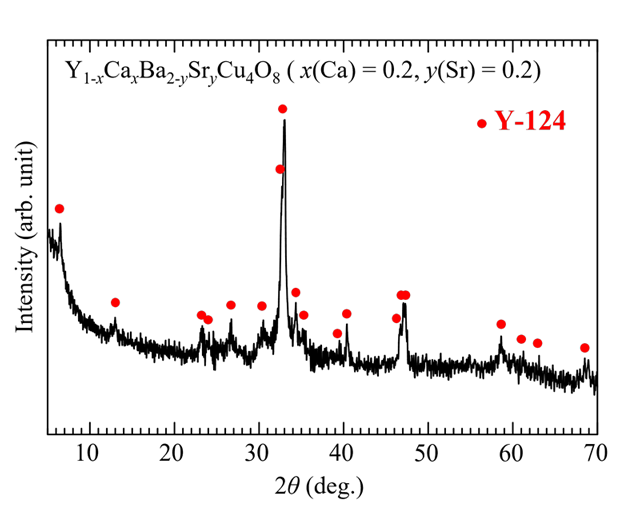PC10-2
Superconductivity in Y1-xCaxBa2-ySryCu4O8 prepared by the solid-state reaction method
*Ayano Imigi1, Hidetaka Sato1, Takayuki Kawamata1, Takashi Noji1, Masatsune Kato1
- Department of Applied Physics, Tohoku University, Sendai, Japan1
The cuprate superconductor YBa2Cu4O8 (Y-124), which has the double Cu-O chains without oxygen nonstoichiometry, is a promising material for the practical application of superconductivity. However, Tc ~ 80 K of Y-124 is too low for the practical application at 77 K. The relatively low Tc of Y-124 is due to the low hole-concentration in the CuO2 plane. It is reported that its Tc increases up to ~90 K by increasing the hole concentration through the partial substitution of Ca2+ for Y3+ [1]. More interestingly, Tc is greatly enhanced up to 108 K by application of a high pressure of 12 GPa [2]. On the other hand, Tc increases only up to ~90 K by applying the chemical pressure through the partial substitution of Sr2+ for Ba2+ [3]. We have reported that Tc does not increase above ~90 K in the co-substituted Y1-xCaxBa2-ySryCu4O8 (0 ≤ x(Ca) ≤ 0.2, 0 ≤ y(Sr) ≤ 0.2) prepared by the molten KOH method [4].
To clarify the cause, in the present study, we have prepared the pelletized samples of Y1-xCaxBa2-ySryCu4O8 by the solid-state reaction method instead of molten KOH method to measure the hole concentration. As shown in Fig. 1, the single-phase samples with the Y-124 structure have been obtained. The values of Tc do not increase above ~90 K, which is in good agreement with our previous results [4]. The hole concentration in the CuO2 plane is ~0.16 (/Cu) for the co-substituted samples with Tc ~ 90 K. We will discuss why Tc does not increase above ~90 K.
[1] T. Miyatake et al., Nature 341, 41(1989).
[2] E. N. van Eenige et al., Physica C 168, 482 (1990).
[3] Y. Miyachi et al., Jpn. J. Appl. Phys. 58, 070906 (2019).
[4] A. Imigi et al., J. Phys. Conf. Ser. 1975, 012006 (2021).
